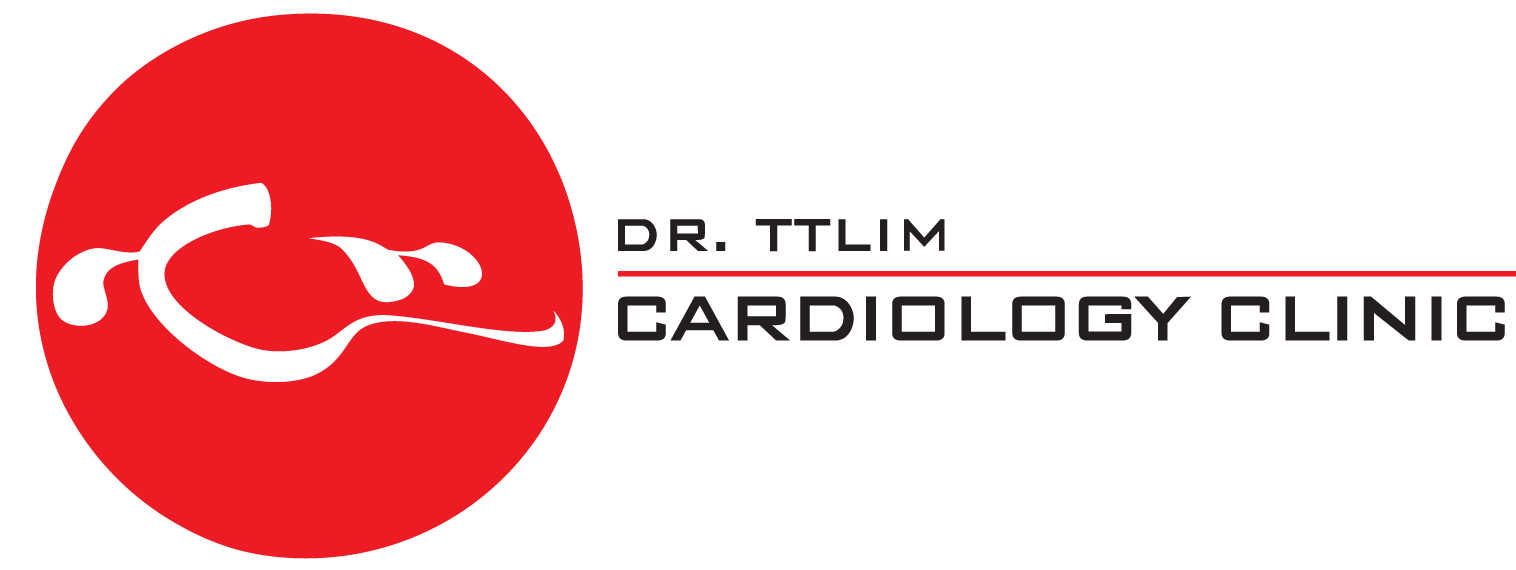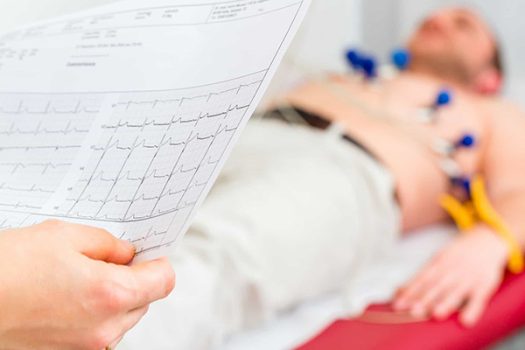Ensuring the well-being of your heart is not just a key element in maintaining good health; it’s a fundamental part of your overall well-being. Your heart, tirelessly pumping life-sustaining blood throughout your body, deserves careful attention and understanding.
Let’s learn more about cardiac health, shedding light on the vital role played by diagnostic tools that have revolutionised how we comprehend and care for our hearts. Navigate the functions of Electrocardiograms (ECG), echocardiograms, Holter monitoring, and 2D echocardiograms, as these will help you in the preservation of your heart’s health actively.
Let’s learn more about cardiac health, shedding light on the vital role played by diagnostic tools that have revolutionised how we comprehend and care for our hearts. Navigate the functions of Electrocardiograms (ECG), echocardiograms, Holter monitoring, and 2D echocardiograms, as these will help you in the preservation of your heart’s health actively.
Decoding ECG (Electrocardiogram)
What is ECG, and why is it important?
An Electrocardiogram (ECG) is a vital diagnostic tool that captures the dynamic electrical activity of the heart, akin to a freeze-frame in time. Graphically representing the heart’s electrical impulses allows healthcare professionals to assess rhythm, timing, and strength. This non-invasive procedure is instrumental in detecting irregular heart rhythms and signs of heart disease.
Offering real-time insights, the ECG plays a crucial role in swift and accurate diagnoses, guiding tailored treatment plans. Whether for routine check-ups or symptom investigation, the ECG is pivotal in evaluating the overall functionality of the heart.
Offering real-time insights, the ECG plays a crucial role in swift and accurate diagnoses, guiding tailored treatment plans. Whether for routine check-ups or symptom investigation, the ECG is pivotal in evaluating the overall functionality of the heart.
How does it work?
During an ECG, electrodes are attached to your skin, picking up the electrical signals generated by your heart. These signals create a waveform that provides valuable information about your heart’s rhythm.
What can it tell us?
ECGs are commonly used to detect irregular heartbeats (arrhythmias) and assess overall heart health. It’s a quick and essential tool in cardiac diagnostics.
Echoing the Heart with Echocardiograms
What's an echocardiogram, and why might you need one?
An echocardiogram is a diagnostic imaging technique akin to an ultrasound of your heart. By employing sound waves, it generates comprehensive images that provide detailed insights into your heart’s structure and function.
This non-invasive procedure is a powerful tool in cardiovascular health, enabling healthcare professionals to visually assess the chambers, valves, and overall performance of the heart. An echocardiogram becomes particularly valuable when a more nuanced understanding of the heart’s condition is necessary, whether to investigate specific symptoms, monitor ongoing treatment, or detect underlying cardiac issues.
An echocardiogram offers a dynamic and detailed portrait of your heart’s inner workings, guiding medical practitioners in delivering precise and personalised care.
This non-invasive procedure is a powerful tool in cardiovascular health, enabling healthcare professionals to visually assess the chambers, valves, and overall performance of the heart. An echocardiogram becomes particularly valuable when a more nuanced understanding of the heart’s condition is necessary, whether to investigate specific symptoms, monitor ongoing treatment, or detect underlying cardiac issues.
An echocardiogram offers a dynamic and detailed portrait of your heart’s inner workings, guiding medical practitioners in delivering precise and personalised care.
What's the difference between an ECG and an echocardiogram?
While ECG focuses on electrical activity, an echocardiogram visually represents the heart’s anatomy. It’s a valuable complement to ECG.
Types of echocardiograms explained.
Echocardiograms come in various types, including 2D, 3D, and Doppler. Each offers unique insights into different aspects of your heart’s health.
What is Holter monitoring, and why is it a bit different?
Holter monitoring is a specialised diagnostic technique designed to track and record the continuous electrical activity of the heart over an extended period, typically 24 to 48 hours. Unlike a standard electrocardiogram (ECG), which provides a snapshot of the heart’s electrical activity during a brief test, Holter monitoring captures data continuously, offering a comprehensive picture of the heart’s behaviour in real-world conditions.
The key distinction lies in its prolonged monitoring duration, making Holter monitoring particularly useful for detecting sporadic or intermittent heart rhythm abnormalities that may not be captured in a shorter timeframe. This extended observation allows healthcare professionals to correlate recorded events with the patient’s daily activities and symptoms, aiding in diagnosing and managing conditions such as arrhythmias or palpitations.
Holter monitoring goes beyond the confines of a single moment, providing a more holistic understanding of the heart’s rhythm and identifying irregularities that might otherwise go undetected. This makes it a valuable tool in uncovering subtle cardiac issues that require continuous observation for accurate assessment and appropriate intervention.
The key distinction lies in its prolonged monitoring duration, making Holter monitoring particularly useful for detecting sporadic or intermittent heart rhythm abnormalities that may not be captured in a shorter timeframe. This extended observation allows healthcare professionals to correlate recorded events with the patient’s daily activities and symptoms, aiding in diagnosing and managing conditions such as arrhythmias or palpitations.
Holter monitoring goes beyond the confines of a single moment, providing a more holistic understanding of the heart’s rhythm and identifying irregularities that might otherwise go undetected. This makes it a valuable tool in uncovering subtle cardiac issues that require continuous observation for accurate assessment and appropriate intervention.
When might you need Holter monitoring?
This tool is particularly useful when symptoms, such as palpitations or dizziness, are sporadic and may not be captured during a brief office visit.
Pros and cons of Holter monitoring
While Holter monitoring provides valuable data, it has limitations. It excels in capturing irregularities during daily activities but may only detect some issues.
Getting a Clear Picture through 2D Echocardiograms
What are 2D echocardiograms?
2D echocardiograms are a sophisticated imaging technology that produces a detailed, real-time, and moving visual representation of the internal structures of your heart. This diagnostic method utilises ultrasound waves to capture two-dimensional images of the heart’s chambers and valves. Unlike traditional static images, 2D echocardiograms provide dynamic insights into the heart’s function, allowing healthcare professionals to observe its movements and contractions in real time.
The procedure involves placing an ultrasound transducer on the chest, emitting sound waves that bounce off the heart’s structures and create continuous images. These images offer a comprehensive view of the heart’s anatomy, enabling clinicians to assess the chambers and valves’ size, shape, and function. 2D echocardiography is a versatile tool used for various purposes, including detecting structural abnormalities, assessing cardiac function, and monitoring the effectiveness of treatments.
2D echocardiograms go beyond static snapshots, providing a dynamic and detailed visualisation of your heart’s inner workings, allowing healthcare providers to assess its health and functionality accurately.
The procedure involves placing an ultrasound transducer on the chest, emitting sound waves that bounce off the heart’s structures and create continuous images. These images offer a comprehensive view of the heart’s anatomy, enabling clinicians to assess the chambers and valves’ size, shape, and function. 2D echocardiography is a versatile tool used for various purposes, including detecting structural abnormalities, assessing cardiac function, and monitoring the effectiveness of treatments.
2D echocardiograms go beyond static snapshots, providing a dynamic and detailed visualisation of your heart’s inner workings, allowing healthcare providers to assess its health and functionality accurately.
Why do doctors use 2D echocardiography?
This imaging technique is invaluable in diagnosing structural heart issues, assessing heart function, and monitoring treatment effectiveness.
What are the upsides and downsides?
The clear images provided by 2D echocardiograms help doctors make accurate diagnoses. However, it may not provide as much detail as a 3D echocardiogram.
When Might You Encounter These Tests?
Warning signs that might lead to an ECG
If you experience chest pain, palpitations, or shortness of breath, your doctor may recommend an ECG to assess your heart’s electrical activity.
Indications for getting an echocardiogram
For a more in-depth evaluation of your heart’s structure and function, an echocardiogram may be ordered if you have a history of heart disease, murmurs, or unexplained symptoms.
When is Holter monitoring essential?
Holter monitoring is essential when symptoms are sporadic, helping doctors correlate symptoms with specific heart rhythm abnormalities.
Cases calling for a 2D echocardiogram
A 2D echocardiogram may be recommended if your doctor needs detailed images of your heart’s chambers, valves, and blood flow.
The Tech Behind Heart Health
What's new in ECG tech?
Advancements in ECG technology, such as portable devices and smartwatches, allow for convenient and continuous heart monitoring.
Advancements in echocardiogram imaging
Technological improvements enhance the clarity and precision of echocardiogram images, aiding in more accurate diagnoses.
How remote monitoring and telemedicine help with Holter monitoring.
Remote monitoring options for Holter devices enable healthcare providers to assess your heart’s activity without requiring you to be physically present, making healthcare more accessible.
Keeping your heart in check is simpler than you think. Regular check-ups using tools like ECG, echocardiograms, Holter monitoring, and 2D echocardiograms can provide valuable insights into your cardiac health. Your heart deserves the attention, so make heart health a priority!
Keeping your heart in check is simpler than you think. Regular check-ups using tools like ECG, echocardiograms, Holter monitoring, and 2D echocardiograms can provide valuable insights into your cardiac health. Your heart deserves the attention, so make heart health a priority!





